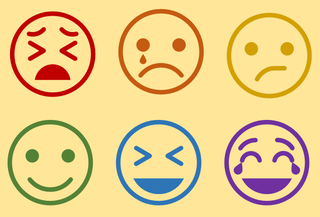Friends
What Do We Do to Help Others Feel Better?
We do more, listen more, and empathize more for close friends than others.
Posted June 27, 2022 Reviewed by Jessica Schrader
Key points
- The attempt to influence other people's emotions is called extrinsic emotion regulation.
- New research shows that if the person in distress is a close friend, people are more likely to attempt extrinsic regulation.
- Having someone to empathize with you and cheer you up may be a key mental health benefit to having close friends.
People regulate each other's emotions all the time, every day. We all try to influence the emotions of the people around us. When you regulate someone else's emotions, it happens in four steps:
- Identifying the need to regulate. Before you do anything, you would have to decide whether it is worth making an attempt to change someone else's emotions. Are they upset? Will the negative feeling last long? Will an attempt to help be successful (or could it backfire)? If the answers are yes, yes, and yes, you might decide to intervene and try to influence the other person's emotions.
- Selecting which strategies to use. You could try a few different things to help the other person. You could try to distract them from the events that are causing their emotions (distraction). You could make a joke or do something silly to make them laugh (humor). You could listen sympathetically while they vent about their problems (social sharing). You could try to convince them to see things in a new way that is less distressing (reappraisal). You could even try to fix the source of their worry by solving the problem (direct action).
- Implement your specific regulation tactics. Once you decide what to do, you need to put it into action. For example, you'd make a particular joke, in a particular tone of voice, at a particular time.
- Evaluate whether it is working. Once you've made your attempt at regulation, you need to monitor how it is being received and decide when to stop or when to switch strategies to something more effective.
The first three steps for regulating an emotion are described in the Extended Process Model of Emotion Regulation by Professor James Gross at Stanford University in 2015. The fourth step was added to the model later that year in another research paper by Professor Gal Sheppes (from Tel Aviv University), Associate Professor Gaurav Suri, and Professor Gross.

Emotion regulation can misfire at any one of these steps. You could fail to see that a friend is upset (a mistake in identifying the need to regulate). You could try to directly solve the problem when what the friend really wants is for you to listen to them talk (a mistake in selecting a strategy). You could make a joke that they don't find funny or even find offensive (a mistake in implementation). Finally, you could fail to switch to a different tactic when your attempt at humor was poorly received (a mistake in stopping/switching).
This month, new research from Victoria Tanna and myself at The University of Sydney shows that what people do in the first three steps depends on how close they feel to the other person.
In her study, Tanna asked 266 people what they would do to help a person feeling angry or anxious in three different situations. Half the people were asked what they would do if the person was their closest friend. The other half were asked what they would do if the person was someone they didn't know very well. An example situation was, "A person you do not know very well mentions they are feeling anxious about all the changes and possible consequences of the COVID-19 pandemic."
Tanna compared how people responded when they were asked about their closest friend compared to someone they did not know very well. There were four key differences.
- People were more likely to make a regulation attempt for their closest friend. That is, they were more likely to identify the need to regulate.
- People were more likely to use a strategy of receptive listening for their closest friend. That is, they were more likely to select the strategy of social sharing.
- People were more likely to evaluate that their attempt was successful for their closest friend. That is, they had higher regulation self-efficacy for the implementation tactics.
- People felt more empathy for the other person for their closest friend. That is, they both knew more and cared more about how the other person was feeling.
This research shows that we do not treat everyone the same when it comes to extrinsic emotion regulation (attempts to influence others' emotions). What people do to help others feel better depends on who the others are. When we make an attempt to regulate someone else's emotions, we make much more effort for those we are close to. This may be a key mental health benefit of having close friends. There is someone who will make an effort to empathize with you, cheer you up, and listen to you express your emotions.
References
Gross, J. J. (2015). Emotion regulation: Current status and future prospects. Psychological Inquiry, 26(1), 1–26. https://doi.org/10.1080/1047840X.2014.940781
Sheppes, G., Suri, G., & Gross, J. J. (2015). Emotion regulation and psychopathology. Annual Review of Clinical Psychology, 11, 379–405. https://doi.org/10.1146/annurev-clinpsy-032814-112739
Tanna V. J., & MacCann C. (2022). I know you so I will regulate you: Closeness but not target's emotion type affects all stages of extrinsic emotion regulation. Emotion. 2022 Jun 16. doi: 10.1037/emo0001073. Epub ahead of print. PMID: 35708946.


